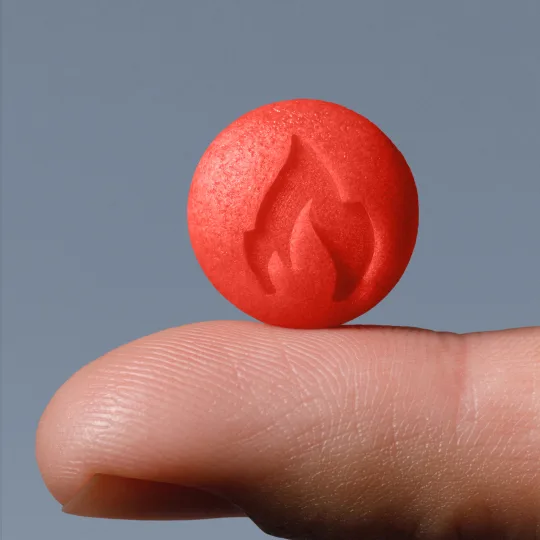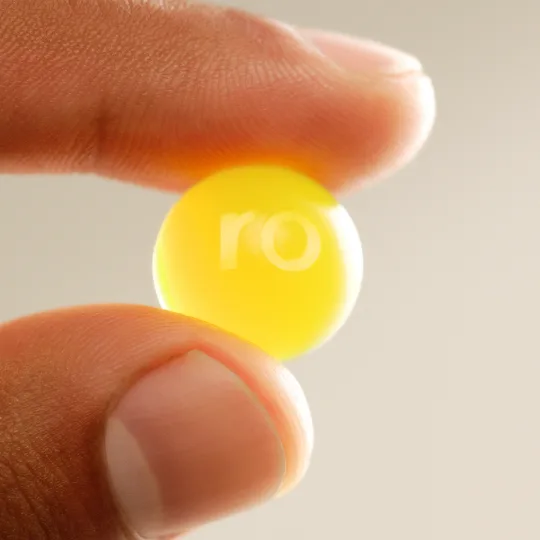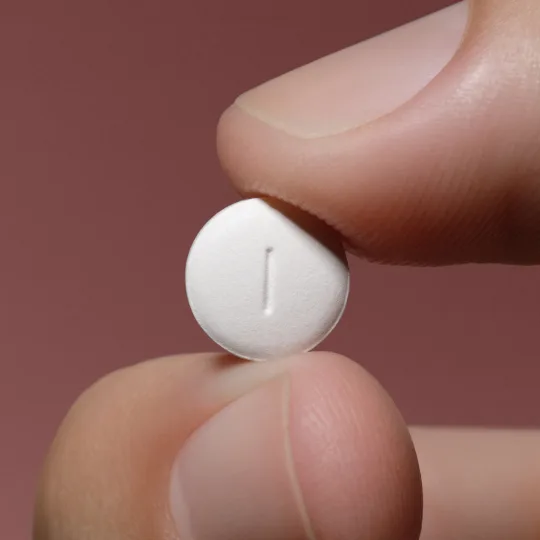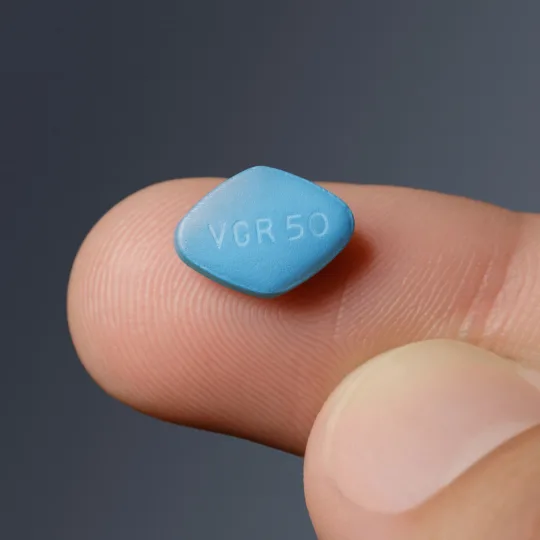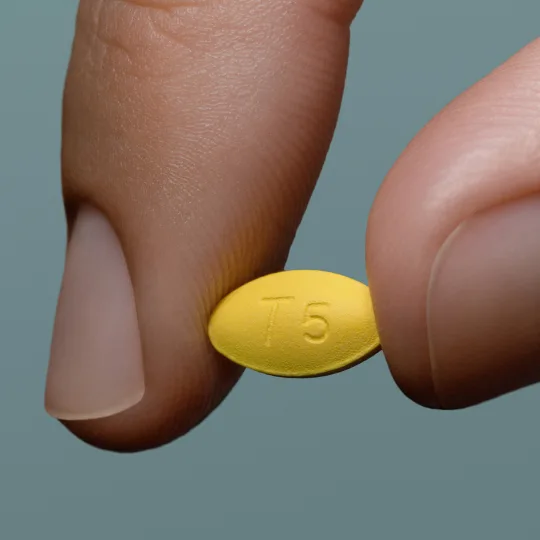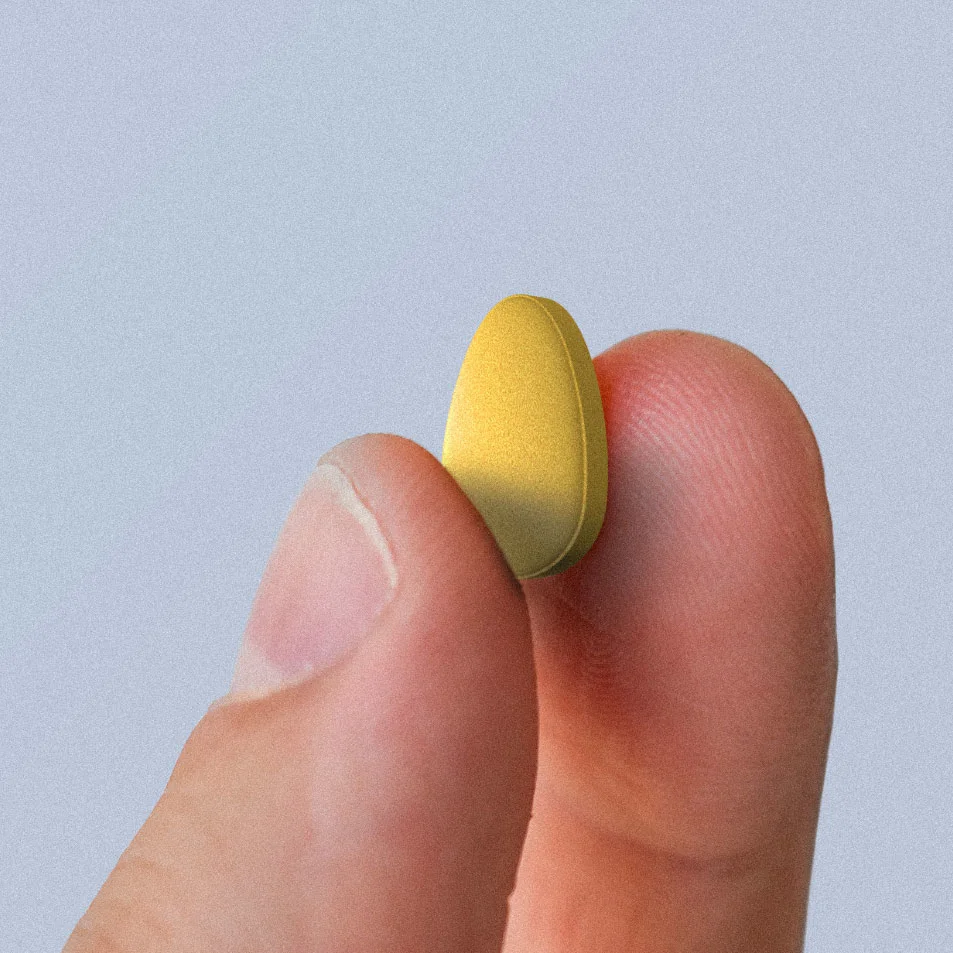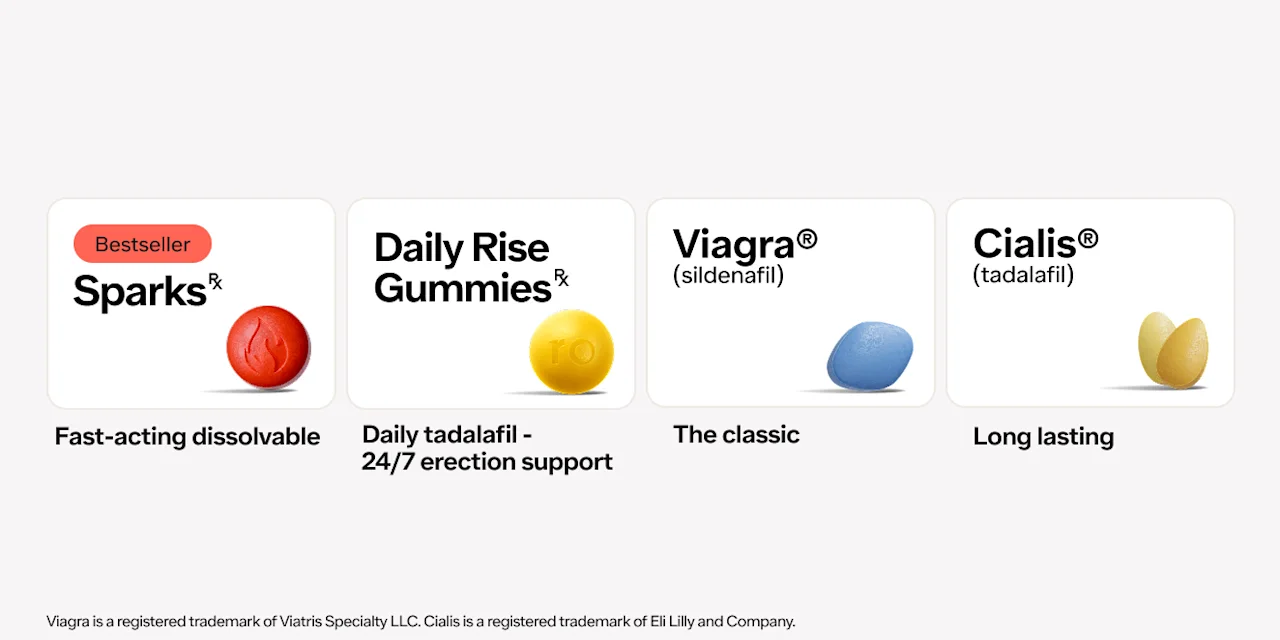Key takeaways
Cialis can treat BPH (benign prostatic hyperplasia) by relaxing the muscles in the prostate and bladder, helping you urinate more effectively.
Cialis starts to work within a week to improve BPH symptoms, with many people seeing full benefits within a month.
Cialis also helps treat erectile dysfunction (ED), which commonly occurs with BPH.
Here's what we'll cover
Here's what we'll cover
Here's what we'll cover
Key takeaways
Cialis can treat BPH (benign prostatic hyperplasia) by relaxing the muscles in the prostate and bladder, helping you urinate more effectively.
Cialis starts to work within a week to improve BPH symptoms, with many people seeing full benefits within a month.
Cialis also helps treat erectile dysfunction (ED), which commonly occurs with BPH.
If you’ve been diagnosed with or suspect you have an enlarged prostate, known as benign prostatic hyperplasia (BPH), you might be searching for a treatment to help with those annoying urinary symptoms. Taking Cialis for BPH is one common way to help improve weak urine stream and frequent bathroom trips.
Here we’ll go over how Cialis (tadalafil) works to treat BPH symptoms and what you should know before starting it.
Is Cialis effective for BPH?
Yes, Cialis is effective for treating BPH. You might know about Cialis primarily as a drug to treat erectile dysfunction (ED), but it’s also approved by the United States Food and Drug Administration (FDA) to treat urinary symptoms related to an enlarged prostate, otherwise known as BPH.
Over half of those assigned male at birth (referred to as men from here on in this article) aged 50 and older have BPH, and a 2021 analysis of 13 studies confirmed that taking 5 mg of Cialis daily was a safe and effective treatment for people with BPH symptoms. Cialis can improve urinary symptoms of BPH, including:
Frequent, urgent need to urinate
Difficulty starting urination
Urine stream that stops and starts
Waking up at night to pee
Feeling like you can’t fully empty your bladder
BPH is also linked to ED and ejaculation problems, like decreased semen volume or painful ejaculation. Since Cialis treats both BPH and ED, it’s like a two-for-one medication.
Have better sex with Ro
How to take Cialis for BPH
Taking Cialis for BPH is pretty simple. Here are the usual guidelines:
Take it once a day at the same time daily, with or without food.
The typical dose for Cialis for BPH is 5 mg.
Always follow your provider’s instructions — some people may need a lower dosage of Cialis based on their health or other medications.
If you miss a dose, take it as soon as you remember, but no more than one dose daily.
You can also try a compounded version of tadalafil if swallowing pills is difficult, such as Ro’s fruity-flavored Daily Rise Gummies, which contain 7 mg of tadalafil. (Note: This formulation is considered off-label since it’s in a different form than the FDA-approved formulation).
How does Cialis work for BPH?
Tadalafil is the active ingredient in Cialis. It’s a prescription medication that relaxes smooth muscle tissue and increases blood flow. That’s why it works so well in treating ED.
It works in a similar way to treat BPH, likely because it sends more blood flow to the bladder and relaxes the smooth muscles surrounding the prostate. This helps decrease the frequent, sudden need to urinate that comes along with BPH. Urinary flow may not improve with tadalafil, but the symptoms get better for many men.
Cialis doesn’t cure BPH, though it can make it easier to live with. You may notice improvements within a week, but it could take up to four weeks to really see results, so hang in there.
Your healthcare provider might recommend combining Cialis with finasteride (Proscar). Taking finasteride and tadalafil together can help with urination problems better than Cialis alone, plus tadalafil reduces sexual side effects of finasteride. The combination also can be more effective for those who have a larger prostate.
As always, it’s important you talk to your healthcare provider if you have any questions or concerns when it comes to Cialis (or any other drug) for BPH.
Side effects of Cialis for BPH
Most people don’t have any problems taking Cialis. It doesn’t cause side effects often, but when they happen, they tend to be mild.
The most common side effects for Cialis include:
Headache
Indigestion or acid reflux
Back pain or sore muscles
Common cold symptoms, such as sore throat or runny nose
Diarrhea
Pain in your arms and legs
Flushing
Some people can have more serious side effects that, while rare, need immediate medical attention. These include:
An erection lasting more than four hours (aka priapism)
Changes in your color vision, or loss of vision in one or both eyes
Severe allergic reactions
Cialis may not be a good choice for some people. You shouldn’t take Cialis if you:
Take nitrates (including nitroglycerin) for chest pain, or have used nitrates in the last 48 hours
Have had an allergic reaction to tadalafil (including tadalafil-containing medications like Adcirca)
Cialis interactions
Let your healthcare provider know about all the medications you take, including over-the-counter (OTC) medications, vitamins, and supplements. Certain medications, can interact with Cialis or increase the risk of side effects, including:
Alpha blockers
Blood pressure medications
Antibiotics
It’s a good idea to check with your healthcare provider before starting or stopping any other medications while taking Cialis for BPH.
Some OTC medicines can make BPH symptoms worse. For example, if you have BPH, it’s best to avoid products that contain diphenhydramine and pseudoephedrine. Ask a pharmacist to help you choose a cold or allergy medicine that’s safe for you to take with Cialis.
Drinking five or more alcoholic beverages can increase the risk of side effects like headache, dizziness, and low blood pressure (hypotension). So, it’s best to limit the amount of alcohol you consume while taking this medication.
Flomax vs. Cialis for BPH
The first medication that experts recommend for BPH is usually an alpha-blocker, such as Flomax (tamsulosin). But if you have both BPH and ED, Cialis is likely the best option, since Cialis can treat both BPH and ED, while Flomax only treats urinary symptoms. Flomax works by relaxing the prostate and bladder muscles, making it easier to urinate and fully empty the bladder.
Here are some differences to consider when deciding between Flomax vs. Cialis for BPH treatment with your healthcare provider:
Condition(s) to treat: Cialis treats both BPH and ED, while Flomax only treats BPH.
When it kicks in: Flomax helps BPH symptoms in as few as 3 days, while Cialis can take 1–4 weeks.
Convenience: You can take Cialis once daily with or without food, but you need to take Flomax about 30 minutes after the same meal each day.
Different safety factors: Flomax carries unique risks for people having glaucoma or cataract surgery or those with sulfa allergies. Cialis has different risks, for example, it’s unsafe for people taking nitrates. These are just a few examples; other risks are possible.
You can take Flomax and Cialis together, and some studies show this combination might be better than either medication alone for improving BPH and ED symptoms. But using both can sometimes cause your blood pressure to drop too low, causing you to feel dizzy or faint.
Talk with your healthcare provider to review your options. They can help you find the safest and most effective medication for you.
Bottom line
Cialis (tadalafil) is an effective medication for managing BPH, offering consistent relief from symptoms like frequent urination and weak urine stream with a daily 5 mg dose.
Cialis works by relaxing the muscles in the prostate and bladder. This eases pressure on the urethra and helps you urinate better.
Cialis can be a two-for-one medication. If you have BPH and ED, Cialis can treat both conditions with the same daily dose.
Cialis can work more quickly than other BPH medications. Cialis can help relieve symptoms within one week, with full effects typically seen in four weeks. In comparison, finasteride (Proscar) takes 3–6 months to kick in, while tamsulosin (Flomax) works within three days.
A healthcare provider can walk you through your treatment options. Before starting Cialis (or any new medication), talk with your healthcare provider to ensure it’s safe for you, especially if you take nitrates or have other heart problems.
DISCLAIMER
If you have any medical questions or concerns, please talk to your healthcare provider. The articles on Health Guide are underpinned by peer-reviewed research and information drawn from medical societies and governmental agencies. However, they are not a substitute for professional medical advice, diagnosis, or treatment.
Cialis Important Safety Information: Read more about serious warnings and safety info.
Finasteride Important Safety Information: Read more about serious warnings and safety info.
References
Cui, J., Cao, D., Bai, Y., et al. (2021). Efficacy and safety of 12-week monotherapy with once daily 5 mg tadalafil for lower urinary tract symptoms of benign prostatic hyperplasia: evidence-based analysis. Frontiers in Medicine, 8, 744012. doi: 10.3389/fmed.2021.744012. Retrieved from https://www.frontiersin.org/journals/medicine/articles/10.3389/fmed.2021.744012/full
DeLay, K. J., Nutt, M., & McVary, K. T. (2016). Ejaculatory dysfunction in the treatment of lower urinary tract symptoms. Translational Andrology and Urology, 5(4), 450–459. doi: 10.21037/tau.2016.06.06. Retrieved from https://pmc.ncbi.nlm.nih.gov/articles/PMC5002000/
Elkelany, O. O., Owen, R. C., & Kim, E. D. (2015). Combination of tadalafil and finasteride for improving the symptoms of benign prostatic hyperplasia: critical appraisal and patient focus. Therapeutics and Clinical Risk Management, 11, 507–513. doi: 10.2147/TCRM.S80353. Retrieved from https://pubmed.ncbi.nlm.nih.gov/25848297/
Fahmy, G. & Hess, J. (2024). Tadalafil. StatPearls. Retrieved from https://www.ncbi.nlm.nih.gov/books/NBK603743/
Ng, M., Leslie, S. W., & Baradhi, K. M. (2024). Benign prostatic hyperplasia. StatPearls. Retrieved from https://www.ncbi.nlm.nih.gov/books/NBK558920/
Oelke, M., Giuliano, F., Mirone, V., et al. (2012). Monotherapy with tadalafil or tamsulosin similarly improved lower urinary tract symptoms suggestive of benign prostatic hyperplasia in an international, randomised, parallel, placebo-controlled clinical trial. European Urology, 61(5), 917–925. doi: 10.1016/j.eururo.2012.01.013. Retrieved from https://pubmed.ncbi.nlm.nih.gov/22297243/
Porst, H., Kim, E. D., Casabé, A. R., et al. (2011). Efficacy and safety of tadalafil once daily in the treatment of men with lower urinary tract symptoms suggestive of benign prostatic hyperplasia: results of an international randomized, double-blind, placebo-controlled trial. European Urology, 60(5), 1105–1113. doi: 10.1016/j.eururo.2011.08.005. Retrieved from https://www.sciencedirect.com/science/article/abs/pii/S0302283811008657
Sandhu, J. S., Bixler, B. R., Dahm, P., et al. (2023). Management of lower urinary tract symptoms attributed to benign prostatic hyperplasia (BPH): AUA Guideline amendment 2023. The Journal of Urology, 10. doi: 10.1097/JU.0000000000003698. Retrieved from https://www.auanet.org/guidelines-and-quality/guidelines/benign-prostatic-hyperplasia-(bph)-guideline
Sun, K., Sun, F., Yao, H., et al. (2020). Efficacy and safety of combination comprising tamsulosin and pde5-is, relative to monotherapies, in treating lower urinary tract symptoms and erectile dysfunction associated with benign prostatic hyperplasia: a meta-analysis. American Journal of Men's Health, 14(6), 1557988320980180. doi: 10.1177/1557988320980180. Retrieved from https://pmc.ncbi.nlm.nih.gov/articles/PMC7756049/
U.S. Food & Drug Administration (FDA). (2018). Prescribing Information: Cialis (tadalafil) tablets, for oral use. Retrieved from https://www.accessdata.fda.gov/drugsatfda_docs/label/2018/021368s030lbl.pdf
U.S. Food & Drug Administration (FDA-a). (2025). Prescribing information: diphenhydramine hcl solution. Retrieved from https://nctr-crs.fda.gov/fdalabel/services/spl/set-ids/3f05a2f5-b4e9-4f8c-8c3e-1338b4b741ae/spl-doc
U.S. Food & Drug Administration (FDA). (2021). Prescribing Information: Entadfi (finasteride and tadalafil) capsules, for oral use. Retrieved from https://www.accessdata.fda.gov/drugsatfda_docs/label/2021/215423s000lbl.pdf
U.S. Food & Drug Administration (FDA). (2019). Prescribing Information: Flomax (tamsulosin) capsules, for oral use. Retrieved from https://dailymed.nlm.nih.gov/dailymed/fda/fdaDrugXsl.cfm?setid=6771ad8e-ac92-4aec-b484-5d8350a353f8&type=display
U.S. Food & Drug Administration (FDA-b). (2025). OTC Drug Monograph: pseudoephedrine hcl tablet, film coated. Retrieved from https://nctr-crs.fda.gov/fdalabel/services/spl/set-ids/f12b7f07-0b81-4cab-ae0f-43a7bf9b4bc5/spl-doc


